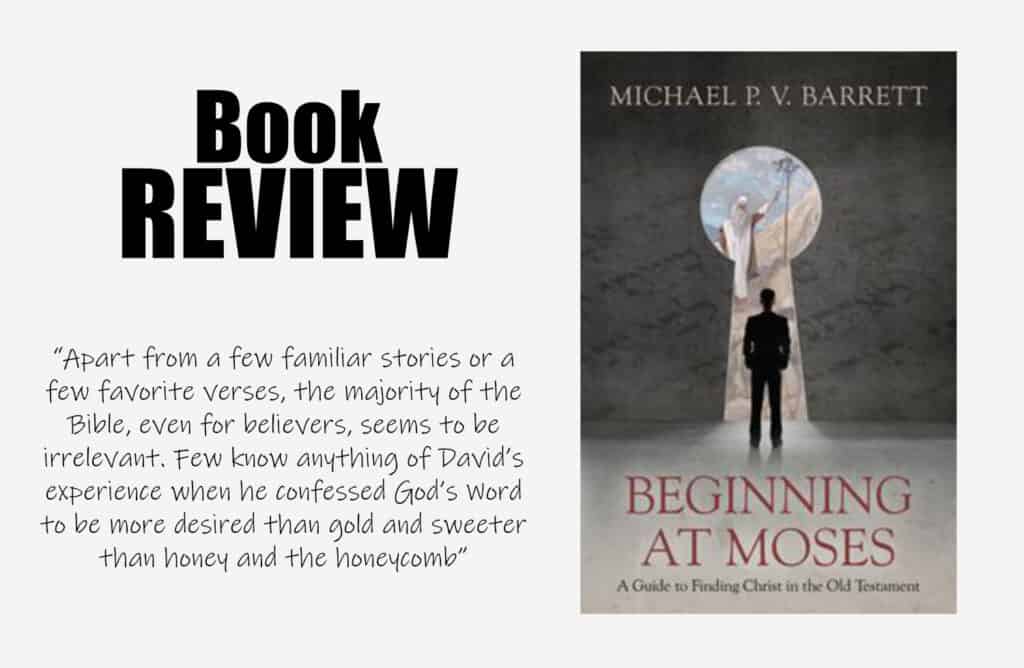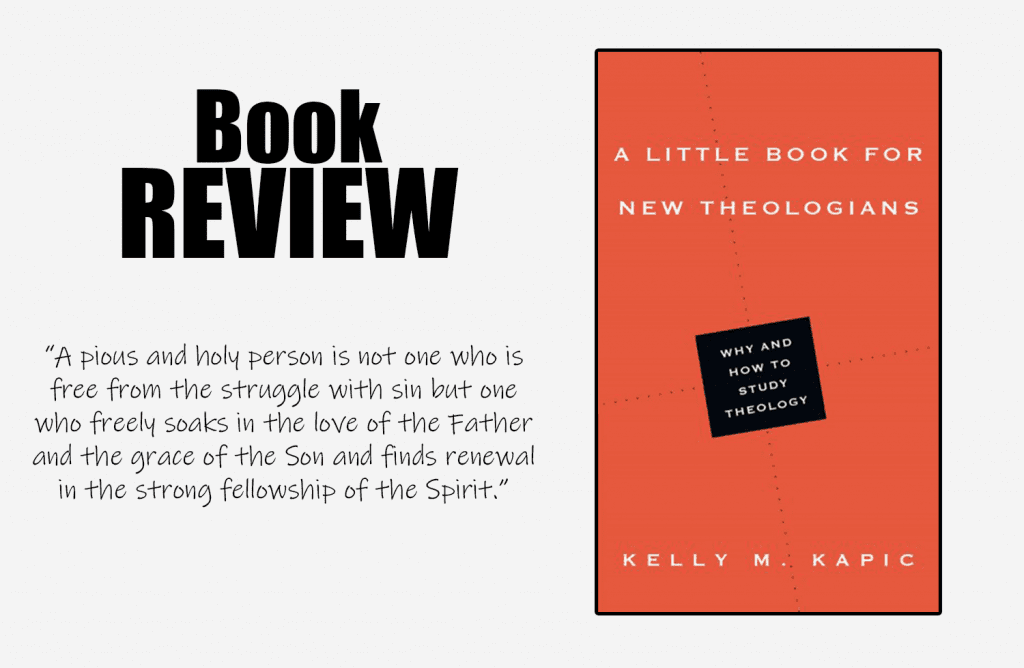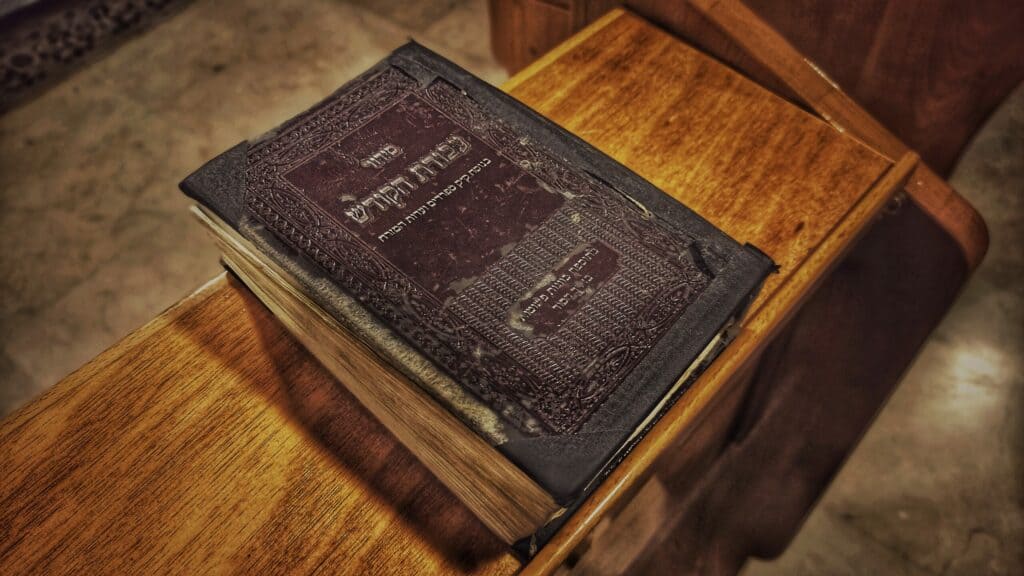Introduction
Covenants are the primary way God establishes and maintains a relationship with his people through redemptive history. Beginning with Adam and ending with Christ, God has used covenants to relate with His people. Covenants are broadly separated into the Old Covenant(s) and the New Covenant. This paper will examine the biblical covenants and identify the unique superiority of the New Covenant in the life of the Christian.
Defining Covenant
A covenant is a means by which God communicates his love for his people via promise and ritual and through blessings. While covenants can exist between human parties, this paper will focus completely on divine covenants.[1] At its core, covenants are agreements between two or more people. O. Palmer Robertson defines a covenant as a “bond in blood, or a bond of life and death, sovereignly administered.”[2] While these two definitions, at their core, do justice to what a covenant is, they are academic definitions that lack the nuance presented within Scripture. The working definition in this paper will be “An oath of grace, administered by God, to men, to signify and maintain his relationship to them.”
Old Covenants
Each covenant in Scripture has unique characteristics, yet all share a basic framework: 2 or more parties, conditions to be kept, and a sign of its ratification.[3] This framework will help to identify biblical covenants within the text. There are also two major covenantal divisions within Scripture, the Old Covenants and the New Covenant, each contained respectively within the Old and New Testaments. The Old Testament contains 5 major covenants between God and his people: the Adamic (Gen 1–2), Noahic (Gen 6–9), Abrahamic (Gen 12:1–3; 15:18–21; 17:2–6; 26:3; 28:13), Mosaic (Exodus 20:1–21; 24:3–8; 30:15–20), and Davidic (2 Sam 7:1–17). These covenants are the backbone of redemptive history and serve as the foundation of the New Covenant.
The distinction between conditional and unconditional covenants is important to discussing divine covenants. Like the Adamic and Mosaic, conditional covenants require both parties to work toward its fulfillment. Like the Noahic, Abrahamic, Davidic, and New, Unconditional covenants do not require the human party to maintain the covenant promises. The two categories can broadly be defined as covenants of work and grace. Though, in their truest forms, all covenants (being initiated by God and necessary for the redemption of man and maximum glorification of God) are covenants of grace.
Adamic Covenant
The Adamic covenant, also known as the covenant of works or the Edenic covenant, is the first covenant found in Scripture. While not explicitly mentioned in the text, all the essential elements are present. Dr. Ligon Duncan notes that the Genesis account contains two parties (God and Adam), a command to be kept (do not eat of the tree), a blessing to be given (rule over the earth), and a sign (the tree of life).[4] Robert Letham states,
“Though the term covenant is not expressly found within the opening chapters of Genesis, that does not rule out its practical presentation as one. However, the whole counsel of God is not confined to direct biblical statements. It also includes what ‘by good and necessary consequence may be deduced from Scripture.'”[5]
This covenant is one of works, and ultimately, as we read in Genesis 3, Adam failed to fulfill his responsibilities in the Covenant. In choosing to eat from the tree of the knowledge of good and evil, Adam received the punishment for breaking the covenant and bringing sin to the world. This covenant-breaking eventually necessitates the establishment of the New Covenant, which is foretold in Genesis 3:15. More directly, this sin leads to the necessary creation of the Noahic Covenant.
The Noahic Covenant
The Noahic Covenant is the second covenant God makes with his creation. The covenant parties are God and Noah (though Noah represents all human and animal kind). The blessing received is the promise that “…never again will all flesh be cut off by the waters of the flood, and never again shall there by a flood to destroy the earth” (Gen 9:11)[6]. The covenant sign is likely the most well-known of all covenant signs, the rainbow. Though not explicitly stated in the covenant terms, they are preceded by a clear punishment of death for taking human life, setting humans in a unique status over animals.[7]
Unlike the Adamic covenant, the Noahic Covenant was created out of necessity due to the sin in the world. The Noahic Covenant is also the first example of a covenant of grace where the terms are upheld by God alone. There does not seem to be any terms by which Noah or creation can fail to uphold their conditions and face punishment. This foreshadows the New Covenant, where the conditions are met by God alone, and God’s character and power secure the blessings.
Abrahamic Covenant
The Abrahamic Covenant is another unconditional covenant and one of the most extensive in the Old Testament, being spoken of and elaborated on all through Genesis. It is a covenant between God and Abraham. God promises a lineage to Abraham (Gen 12:1–3; 15:18–21), a theocracy (Gen 17:7–8), and prosperity (Gen 28:4). The sign of this covenant is the sacrifice, cutting, and passing through several animals; the sign of circumcision follows this.[8] A unique feature of the Abrahamic covenant is that the covenant promises are repeated through the patriarchal lineage. This covenant is the beginning of the direct fulfillment of the promises made in response to the fall in Genesis 3; this would be the initiation of the line that would bring the Redeemer into the world, again pointing toward the New Covenant.
Mosaic Covenant
The Mosaic Covenant is where the covenant of works typically begins.[9] While many scholars disagree on the validity of the Adamic covenant, there is overwhelming unity in the Mosaic covenant being the primary covenant of works. Both modern scholars and, more authoritatively, New Testament authors refer explicitly to the Mosaic covenant like the Old Covenant. There is a distinct difference between the other given covenants and the Mosaic covenant: the law; requirements specifically given to Israel to follow if they are to be in fellowship with God and receive His blessings.
The Mosaic covenant is where God beings to realize the promises made in the Abrahamic Covenant. The two largest fulfillments are families being made into a nation and the world being blessed by the giving of the law.[10] The most well-known and referenced part of the Mosaic covenant is the official inauguration of the sacrificial system as the means for the people of Israel to be made right with God. The specific differences between the Mosaic covenant and the New Covenant will be discussed more fully later in this paper.
The Mosaic covenant is the covenant explicitly mentioned by the New Testament authors as the Old Covenant (c.f. 2 Cor 3:14l Heb 8:6, 13) and is also the covenant which is directly replaced by the New Covenant (Luke 22:20; 1 Cor 11:25; 2 Cor 3:6; Heb 8:8, 8:13, 9:15, 12:24). The Parties of this covenant are God and Israel (represented by Moses). The covenant terms are that if Israel obeys God, God will bless them. The blessings come in many forms but focus on Israel becoming a “kingdom of priests and a holy nation” (Ex 19:6) if they obey the Law of God.[11]
Davidic Covenant
The next and last of the Old Covenants is the Davidic covenant. With the establishment of the nation of Israel and the Mosaic covenant, God focuses His covenant promises on the royal line promised to Abraham. Kyle Wassel correctly states, “The royal, Messianic line is emphasized in the Davidic Covenant. God promised Abraham that nations would come from him and that his seed would be a blessing to the nations (world) and rule the land of Canaan. This promise is partly fulfilled in the nations of Israel and King David, who exercised God’s rule over the vast territory God had given Israel. Nevertheless, the promise is more accurately (or more ultimately) fulfilled in Jesus who is God’s Son and rules over the entire creation.”[12]
The Davidic covenant parties are God and David. In 2 Samuel 17:11–16, God promises rest from enemies (11), a house/kingdom (11–12), a father/son relationship (14), everlasting love (15), and an eternal throne (16). While not very explicit, the sign seems to be the eternal throne given to David’s lineage, ultimately fulfilled in Christ. This is the last Old Covenant and, as such, has some of the most direct foreshadowings of Christ and the New Covenant. Christ provides our final rest, an eternal family/house, an eternal throne/kingdom, a perfect father/son relationship, and our eternal love.
New Covenant
The New Covenant is the final and ultimate covenant between God and man. The New Covenant, at its core, is the culmination of every covenant that preceded it. In Christ is found perfect obedience of the mosaic and Adamic Law, and the fulfillment of every promise made in the Noahic, Abrahamic, and David covenants. Before beginning, it is important to establish that while the New Covenant appears to be wildly different from the Old Covenants (and in some ways it is), it is truly a fulfillment and continuation of those covenants and not a replacement.[13] There are many differences between the Old and New Covenants. However, the New Covenant is marked by several key differences: removing the sacrificial law, a new priesthood, a new temple, the Holy Spirit, a new heart, spiritual blessing, worldwide salvation.[14]
Elements of the New Covenant
The New Covenant primarily addresses the Mosaic covenant and law but has equal application to the other covenants; God’s covenants are an unfolding and revealing of redemptive history. Like the Old Covenants, there are two parties, God and Christ (as the representative of mankind as Adam was in the Adamic covenant (Rom 5:15)). The New Covenant promises are forgiveness of sins (Matt 26:28; Acts 13:38), justification (Heb 8:12; 10:17; Jer 31:34), security (Phil 3:12, Jude 24), righteousness (2 Cor 5:21; Rom 5:17), the Holy Spirit (John 14:26), overcoming the world (1 John 5:4), rest (Heb 4:10–11), eternal life (Rom 6:23). The New Covenant has three signs: baptism, communion, and the (indwelling) Holy Spirit.[15] This is an unconditional covenant and the epitome of the covenant of grace: the only requirement is faith.
Removal of the Sacrificial Law
The removal of the sacrificial law established in the Mosaic covenant was a turning point in the life of God’s people. No longer would a priest need to make sacrifices for the people continually; instead, Christ became the perfect sacrifice, forever cleansing the people of their sins. Hebrews 9:13–15 speaks to how much greater the sacrifice of Jesus was over the Old Covenant sacrificial system. These verses speak about the inadequacy of the sacrificial system and how Christ’s sacrifice covers the same sins as animals and the sins committed under this first covenant. In other words, while the sacrifice of animals in obedience to God did have an effect, it could never provide a redemption that is an “eternal inheritance.”
A New Priesthood
The Levitical priesthood was an Old Covenant shadow of the priesthood of Christ or, as the author of Hebrews states, a “symbolic for the present age” (Heb 9:9). The purpose of the priesthood in the Old Covenant was to be a mediator between God and his people. The priest could make atonement for the people. However, since they were creatures of sin, they could not bring people closer to God, being limited to dealing “only with food and drink and various washings, regulation for the body imposed until the time of reformation (Heb 9:10)[16] Christ was not a creature of sin and was able to enter as a priest once and for all, securing our eternal redemption.
A New Temple
Beginning with the tabernacle in Exodus and continuing until the building of the temple, God has always chosen to dwell with his people. This trend continues into the New Covenant except, instead of a physical location for the Spirit of God to reside, 1 Corinthians 6:19–20 says that the people are now the dwelling place of the Spirit of God. Romans 6:10–11 makes this even more clear, saying that the same Spirit of God that raised Jesus from the dead is the Spirit that dwells within the believer. In contrast to the Old Covenants, the church is no longer tied to a specific location to be near to God. This means that it is through the church that God reaches the world. [17] The indwelling temple is the ultimate fulfillment by Christ of Leviticus 26:11–12, where God promises to dwell with the believer.[18]
The Holy Spirit
The discussion of the Holy Spirits’ role in the New Covenant starts in the book of Jeremiah. In Jeremiah 31:33, God states that the time will come when his law will be in the believer, written on their hearts and that God and his people will have a relationship like Israel and God, but more intimate and widespread.[19] This prophecy directly predicts the future New Covenant that comes about with Christ. In essence, this prophecy tells of a time when the Old Covenant would be written on the hearts of men rather than on tablets of stone. This prophecy was predicted by Christ in John 14:15–17 and was fulfilled in Acts 2 at Pentecost.
The Holy Spirit was present during the Old Covenant, granting skill and ability to make the tabernacle (Exodus 31:1–3), grant prophecy (1 Sam 10:10), and empowering judgment of Israel (Judges 3:10). The Holy Spirit also acts as a sign, deposit, and seal of the New Covenant for the believer (2 Cor 1:22; 5:5; Eph 1:13–14; 4:30). Of greater note is that the indwelling of the Holy Spirit is not a universal truth for believers during the Old Covenant, but rather he indwells specific men to accomplish certain tasks, and the same Spirit in these men dwells in all believers with the inauguration of the New Covenant.[20]
A New Heart
Ezekiel 36:26 promises a new heart for God’s people, one that is obedient to the commands of God. The case for the depravity of man can be found all over Scripture.[21] Ryrie states that “…corruption extends to every facet of man’s nature and faculties; and that there is nothing in anyone that can commend him to a righteous God.”[22] For God’s people to follow him, they needed a new heart capable of even the smallest attempt at the task. In 2 Corinthians 3:18, the Christian is told that they are being transformed into his (Christ’s) image, including a new heart. Jesus also speaks of the believer residing in the New Covenant as being able to follow God’s Law and follow him, both of which are impossible with the old hearts that dwelt within the Christian (John 14:15; Matt 16:24).
Spiritual Blessing
The Old Covenant’s promises were primarily physical blessings like those found in Leviticus 26:3–13 and Deuteronomy 7:12–15 and 28:1–14. These verses contain promises of beneficial climate, food, satisfaction in food, security, peace, safety, and victory in battle. In the New Covenant, the promises made to believers are spiritual. The Christians food is found in the bread of life (John 6:35), their drink in the fountain of life (John 7:37), their peace is made with God (Rom 5:1), and their battle victory is over “principalities, against powers, against the rulers of the darkness of this world, against spiritual wickedness in high places” (Eph 6:12, KJV). There are earthly blessings that come from obedience to the moral law, and even contextual obedience to the civil law, in the Old Covenant but the New Covenants primary focus is upon a greater form of blessing, everlasting ones.
Worldwide Salvation
One of the major paradigm shifts from the Old Covenants to the New Covenant is the widening of the group of people that have the offer of salvation. Salvation has always been based on faith, the author of Hebrews states that even as far back as Cain and Abel, faith determines one’s acceptance to God. The Old Covenants were originally directed toward specific people and later moved onto a nation. The New Covenant explicitly makes faith the requirement for salvation, and with that, removes perceived limitations on who can become part of the family of God, the biggest inclusion being the Gentiles (Eph 3:4–6). This change allows for the fulfillment of the great commission to spread the Gospel in every nation.
Conclusion
Every covenant is a covenant of grace, though the focus of the covenant takes different forms through history. The Old Covenant was a precursor of the New Covenant and foreshadowed the greatness of Christ’s incarnation. While the Old Covenant was good and right for when it was made, the New Covenant is the idealized way God communicates, relates, and fellowships with His people. The unfolding of redemptive history has led to the New Covenant, created and mediated by Jesus.
Footnotes
[1] Human covenants seem to have originated prior to the writing of the Old Testament and the life of Abraham. While rituals of certain covenants may have existed prior to God’s use of them (Suzerain-Vassal treaties), this does not undermine the divine origins of covenants. God frequently takes human methodologies and redeems them for his purposes; often because these methods are the most effective way to communicate a divine purpose to a limited human understanding.
[2]O. Palmer Robertson, The Christ of the Covenants (Phillipsburg, NJ: P&R Publishing)
[3] Sometimes the covenants only list either a consequence or a blessing, with the opposite being implied by the stated condition; Ligon Duncan, “Defining Covenant” (MP3 of Lecture, Reformed Theological Seminary, accessed December 3, 2021, https://subsplash.com/reformtheosem/lb/mi/+3fb34be.
[4] Duncan, “The Covenant with Noah” accessed December 5, 2021, https://subsplash.com/reformtheosem/lb/mi/+8a51c0a
[5] Robert Letham, Systematic Theology (Wheaton, IL: Crossway, 2019), 351.
[6] All Scripture citations in this work are taken from The Holy Bible: English Standard Version (Wheaton: Standard Bible Society, 2001) unless otherwise noted.
[7] Gordon D. Fee and Robert L. Hubbard Jr., eds., The Eerdmans Companion to the Bible (Grand Rapids, MI; Cambridge, U.K.: William B. Eerdmans Publishing Company, 2011), 85.
[8] Kyle Wassell, “Introduction to Covenant Theology” (Study Notes for Meadow Valley Community Church, 2021), 7, accessed December 6, 2021.
[9] While the largest chunk of the Mosaic covenant is focused on God’s rules for Israel, it is important to remember that Israel’s exodus (and thus the inauguration of the Mosaic covenant) was brought about when God “remembered his covenant with Abraham, Isaac, and Jacob” (Exodus 2:24). So while the Mosaic covenant does seem to be a reinstitution of the Adamic covenant of works, it is an extension from the Abrahamic covenant of grace.
[10] Ligonier, “The Mosaic Covenant,” Ligonier, February 2, 2010. https://www.ligonier.org/learn/devotionals/mosaic-covenant.
[11] GotQuestions, “What is the Mosaic Covenant,” Got Questions, January 27, 2005. https://www.gotquestions.org/Mosaic-covenant.html
[12] Wassell, “Introduction to Covenant Theology,” 9.
[13] Matthew 5:17
[14] Joshua Infantado, “The 7 Most Amazing Changes Made in the New Covenant,” Becoming Christians. https://becomingchristians.com/new-covenant/the-7-most-amazing-changes-made-in-the-new-covenant.
[15] Guy Waters, “The Lord’s Supper as the Sign and Meal of the New Covenant,” Reformed Theological Seminary. https://rts.edu/resources/the-lords-supper-as-the-sign-and-meal-of-the-new-covenant.
[16] Domi Bosquet, “The Perfect High Priest,” The Masters Academy International, April 24, 2021. https://www.tmai.org/devotional/the-perfect-high-priest.
[17] Joe Slunaker, “Y’all are the Temple of God,” The Bible Project, 2019. https://bibleproject.com/blog/temple-of-god.
[18] Joshua Greever, “We are the Temple of the Living God” (2 Corinthians 6:14–7:1): The New Covenant as the Fulfillment of God’s Promise of Presence,” The Southern Baptist Journal of Theology (Fall 2015) November 24, 2015. Accessed December 9, 2021. https://equip.sbts.edu/publications/journals/journal-of-theology/we-are-the-temple-of-the-living-god-2-corinthians-614-71-the-new-covenant-as-the-fulfillment-of-gods-promise-of-presence/
[19] Don Stewart, “How Did the Holy Spirit Work During the Old Testament Period,” Blue Letter Bible, April 24, 2007. https://www.blueletterbible.org/faq/don_stewart/don_stewart_437.cfm.
[20] Got Questions, “What is the Seal of the Holy Spirit,” Got Questions, October 28, 2010. https://www.gotquestions.org/Holy-Spirit-seal.html
[21] C.f. Jer 17:9; Eph 2:1–3; Psa 51:5; 1 Cor 2:14; Rom 3:23.
[22] Charles Caldwell Ryrie, Basic Theology: A Popular Systematic Guide to Understanding Biblical Truth (Chicago, IL: Moody Press, 1999), 253.




Insightful piece
I see You’re in reality a good webmaster. This site loading pace is amazing.
It seems that you are doing any unique trick. Moreover,
the contents are masterpiece. you have done a excellent job in this topic!
Similar here: https://spectralex.top/ and also
here: E-commerce
Hi! Do you know if they make any plugins to help with SEO?
I’m trying to get my blog to rank for some targeted keywords but
I’m not seeing very good success. If you know of any please share.
Cheers! You can read similar art here: Najlepszy sklep
Hi! Do you know if they make any plugins to help with Search Engine Optimization?
I’m trying to get my site to rank for some targeted keywords but I’m not seeing very good success.
If you know of any please share. Appreciate it! You can read similar art here: Link Building
Hi there! Do you know if they make any plugins to help with SEO?
I’m trying to get my site to rank for some
targeted keywords but I’m not seeing very good success. If you know of any
please share. Kudos! You can read similar art here: Scrapebox
List
Hello! Do you know if they make any plugins to assist with SEO?
I’m trying to get my site to rank for some targeted keywords
but I’m not seeing very good success. If you know of any please
share. Kudos! I saw similar text here: Scrapebox List